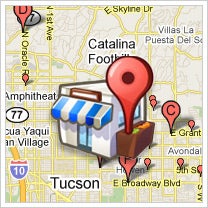How to Boost Traffic to Your Listing on Google Maps Google Boost puts a local twist on pay-per-click advertising.
By John Arnold Edited by Dan Bova
Opinions expressed by Entrepreneur contributors are their own.

One way of finding customers is making sure that it's as easy as possible for customers to find you. If your business has one or more physical locations, using Google Boost is a good new way to showcase your business for as little as $50 per month to people who search for nearby businesses using Google Maps or location-specific searches. Here's how it works.
Your business shows up on Google Maps through only a free business listing in Google Places, so the first step is to create or claim your free listing in Google Places. Go to Google.com and click on Business Solutions to find Google Places and the instructions for creating or claiming your listing.
Once your listing is active on Google Places, you can increase the odds that people will click on your business listing by placing a Google Boost ad. Boost ads can be easily created directly from your Google Places account, and you won't need to spend a lot of time managing complex campaigns or bidding on keywords. Google Boost manages everything for you and charges you by the click according to your specified monthly budget.
Boost ads appear in Google's sponsored search results (at the top of the page or in the right column) when Google determines that your Google Places listing is relevant to someone's search inquiry. Boost ads can display the following information about your business.
- Your business name, address and phone number.
- Your business website address (if your URL is under 35 characters).
- A short description of your business.
- Star ratings and the number of reviews on your Google Places page.
- A link to your Google Places Page.
- Tags you've created for your Google Places page.
Whenever Google shows a map along with search results containing your Boost ad, your business location is marked on the map with a blue marker instead of the red markers that identify the locations of businesses without Boost ads.
Once your Boost ad is approved and active, your Google Places account dashboard will show a link to a Boost dashboard with a daily report of your Boost ad performance. The report shows impressions, clicks and costs attributed to your Boost ad. The report also shows the top keywords people are using when your Boost ad appears.
To make sure your Boost ad is always focused on finding the most customers possible, try using the combination of your Boost ad and Places listing to highlight a new customer offer for a few weeks. Then, change your offer and use your reports to measure the performance of the new offer against the old one. Repeat the process until you think you have the best response rate for your budget.
Have you given Google Boost a try? Leave a comment and tell us what you think.
John Arnold is president of Aveta Marketing, a marketing agency in Boulder, Colo.











